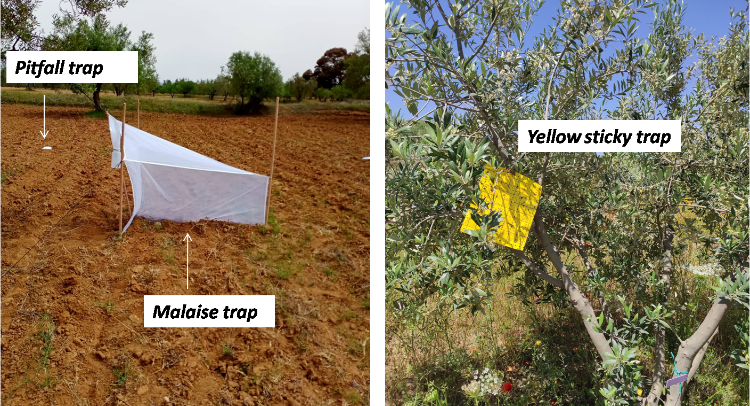Context
In Tunisia, olive is considered an important crop for its high economic and nutritional values. It is mainly cultivated under rainfed conditions for olive oil production. However, the water scarcity and the low organic matter content of the soil lead to the vulnerability of the olive tree to pests’ infestation. Some agro-ecological practices were tested to promote the olive tree sustainability including cover crops, compost, and no tillage.
Treatments tested
– The use of cover crop (Fenugreek and Faba bean) as green manure, soil fertility improver, soil humidity maintainer and insect pest abundance reducer through environmental enrichment by beneficial organisms.
– Spreading compost to improve the water holding capacity, soil fertility and improve the olive productivity.
– No tillage to prevent soil erosion, improves soil texture and structure and reduce insect pest pressure by the development of large number of living organisms that contribute to the decrease of insect pest and the recycling of nutrients.
Fieldwork
Agro-ecological zones selection: Two agro-ecological zones were chosen according to a rainfall gradient (from north to center): Toukaber belonging to the Beja governorate and Jammel belonging to Monastir governorate (Fig.1).

Treatments implementation: The treatments suggested for the olive tree trial are:
– TC = Control, rainfed farmer practice (farmer’s’ current olive tree production practice) (in Toukaber and Jammel);
– T1 = Olive production with compost (in Jammel);
– T2 = Olive tree production with cover crop (Faba bean) (in Toukaber and Jammel);
– T3 = Olive production with cover crop (Fenugreek) (in Toukaber and Jammel);
– T4 = No tillage olive tree production (in Toukaber and Jammel).

Fig. 2: Treatments implementation in Jammel AEZ

Fig. 3: Treatments implementation in Toukaber AEZ
Soil sampling protocol: In the target to estimate the effect of the chosen agro-ecological practices on soil properties, soil sampling was made before cover crop plantation and compost addition and will be analyzed again after the incorporation of cover crops into the soil (Fig. 4).

Insect sampling for biodiversity estimation: The biodiversity estimation for cover crop (faba bean), no tillage and farmer practice plots were assessed by trapping beneficial organisms using malaise, pitfall traps.(Fig. 5). One malaise trap was installed in the center of each plot surrounded by 8 pitfall traps. One sampling period is 2 weeks. The abundance and diversity of arthropods could be an indicator of the efficiency of the agro-ecological practices on supporting ecosystem services.
Flying insect sampling for InsectaMon: Yellow sticky traps were used to monitor pests and non-pests flying insects for the development of an Artificial Intelligence (AI), InsectaMon, which target the recognition of the olive moth and the olive fly based on pictures. Sticky traps were installed at the periphery of the experimental site when pests were active. Traps were photographed once every fortnight and pictures will be used for further development of the AI.

Fig. 5: Malaise and pitfall traps used for the biodiversity estimation and yellow sticky traps used for the development of an Artificial Intelligence recognizing important olive pests.

